#Truth and Reconciliation
Explore tagged Tumblr posts
Text
Indigenous peoples continue to struggle to access complete and timely records about Indian Residential Schools, according to a new report by the Senate standing committee on Indigenous Peoples. The report, Missing Records, Missing Children, was released Thursday and includes 11 recommendations to improve access to residential school records, including for the Canadian government to compel Catholic entities to release documents to the National Centre for Truth and Reconciliation. "It's extremely important for the support of the survivors and the family members to bring closure because everyone is aging on," said Sen. Brian Francis, who is Mi'kmaw from Lennox Island First Nation and is chair of the committee. "The sooner we can get answers the better."
Continue Reading
Tagging: @newsfromstolenland
#truth and reconciliation#first nations#indigenous#residential schools#cdnpoli#canada#canadian politics#canadian news#canadian
4K notes
·
View notes
Photo
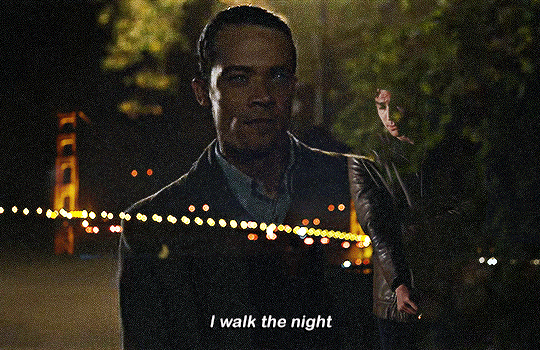
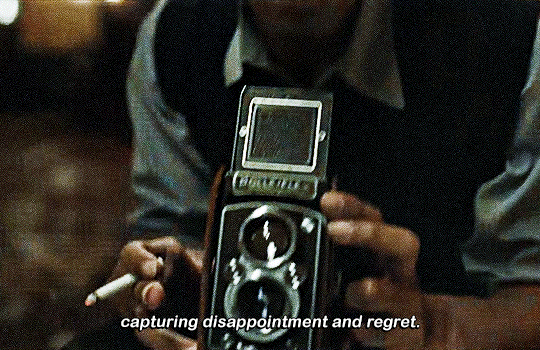
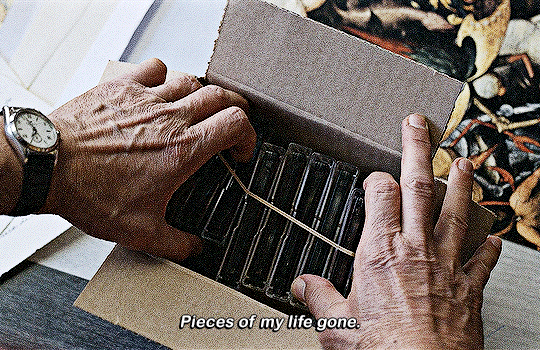
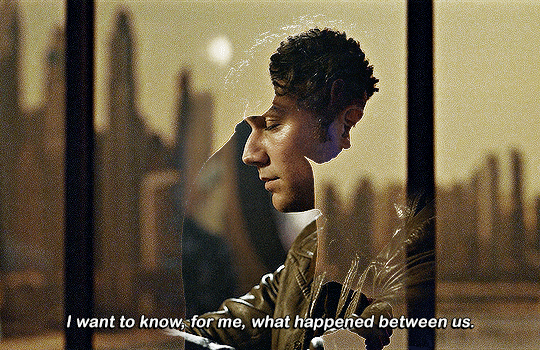
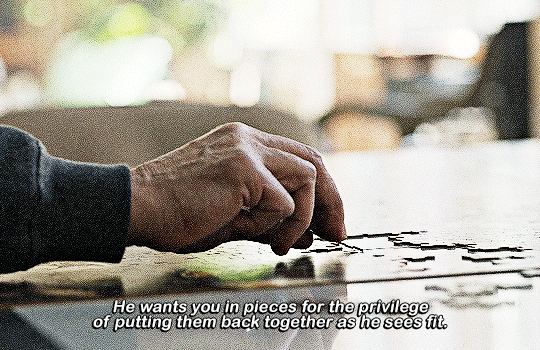
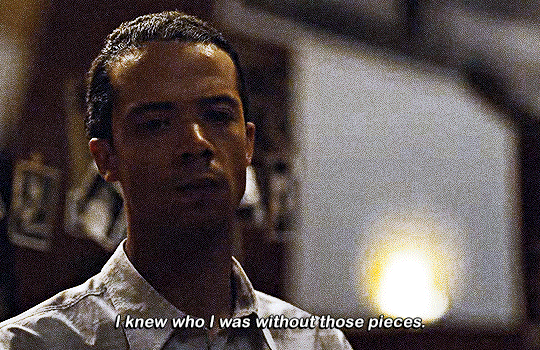
#Interview with the Vampire#loudaniel#danlou#Louis de Pointe du Lac#daniel molloy#iwtv#iwtvedit#tvedit#Vampterview#*gif#truth and reconciliation#there are so many parallels between them in s1 but i'll probably wait for s2 to make it#it will be a huge project. idk how to fit it all#this gifset would work better in video format but i got no programs nor experience#flashing gif
2K notes
·
View notes
Text
Orange Shirt Korra 🧡

Today is the National Day for Truth and Reconciliation, aka Orange Shirt Day, in Canada. It’s a holiday dedicated to raising awareness of the atrocities committed to indigenous children by the Canadian Residential School system.
The Water Tribes in Avatar are heavily inspired by Inuit culture, and Inuit children and communities were greatly impacted by these schools. So, I thought the Avatar would probably want to show her support for the cause.
#the legend of korra#korra#legend of korra#avatar korra#tlok#tlokart#avatar: tlok#tlok fanart#tlok korra#orange shirt day#every child matters#truth and reconciliation#orange shirt korra
943 notes
·
View notes
Text
Canada, Truth & Reconciliation, & Indigenous Games
Hello friends,
Today (September 30th) is the National Day of Truth & Reconciliation in Canada. It is a very recent holiday in this country, and it’s also very important to me. I want to spend some time today telling you about it, and then (since this is a ttrpg blog) directing you to some indigenous storytellers and designers that deserve a spotlight for various reasons.
I am not Indigenous. This information is a collection of knowledge that I have gained through university coursework, personal research I've undertaken, and relationships I've cultivated with indigenous friends who have taken pains to educate me and highlight how these issues have personally affected them. I am aware that the summary I'm providing is incomplete, and there may be elements that I don't fully understand the implications of.
If you are Indigenous, please keep in mind that this post may recall some painful and personal moments of history for you. Proceed with caution. The shout-outs to indigenous creators can be found after the heading “The Storytellers.”
The Truth.
Canada has been engaged in a cultural genocide of its indigenous peoples since European settlers started the colonization of the country. This genocide had many avenues, including the creation of the Indian Act, the relocation of many Indigenous peoples to restricted Reserves, and a disturbing trend of missing and murdered Indigenous women. For the purposes of today however, I’m going to stick to just talking about Residential Schools, and the impact they had on Indigenous families and their children.
Residential schools were designed to “kill the Indian” and “save the child”, in the words of John A Macdonald, the prime minister who authorized their creation. They were designed to sever Indigenous children from their culture and raise them in a Christian, colonial context. These residential schools were harsh, forbidding Indigenous children to speak their mother tongues, cutting their hair, and forcing them to learn skills considered “useful”, in the language of the colonizer, away from their parents. The schools were also hotbeds of abuse. Alarming numbers of children fell ill and died at these schools - the death toll to this day is unknown. From April 1, 1920 to some time in the 1990’s, residential school attendance was mandatory for Indigenous children from the ages of 7 to 16.
The Sixties’ Scoop is a reference to a mass kidnapping of Indigenous children in the 1950’s and 60’s, who were forcibly removed from their homes and “adopted” into non-Indigenous families. While the last residential school in Canada closed in 1997, Indigenous children still make up over 50% of all children in private foster care, despite only accounting for just over 7% of all children under age 15 in Canada.
The Reconciliation.
Reconciliation is a goal prompted by Indigenous groups and elders. It is a choice that promotes "balance and harmony," a way of life that encourages coexistence, according to the words of one residential school survivor, Hereditary Chief, Dr. Robert Joseph.
In 2007, The Indian Residential Schools Settlement came into effect, offering compensation to survivors of many residential schools.
In 2008, the Truth and Reconciliation Commission of Canada was officially launched, intended to be a guide for the Canadian government to help establish lasting reconciliation. This commission was a way to formalize a method of collecting data, and it also had the responsibility of developing a list of recommendations for the country of Canada to follow, in the goal of pursuing a relationship between the Indigenous peoples of Canada and the government of Canada.
In 2007, Cindy Blackstock, a First Nations (Gitxsan) activist launched a court case against the Canadian government, for under-funding social services provided to children living on First Nations reservations. This was in regards to Jordan’s Principle, a child-first Canadian policy that is meant to ensure that First Nations children have equal access to all government funded public services as other Canadian children. The Truth and Reconciliation Commission made the respect of Jordan’s Principle one of its 94 Calls to Action for the Canadian government.
The Canadian Human Rights Tribunal became involved in 2016, when they found more alleged breaches of the Canadian Human Rights Act in regards to Jordan’s Principle. As of September this year, the Federal Government is still attempting to dismiss human rights complaints regarding the use (or, in fact, neglect) of Jordan’s Principle.
Canada’s history of residential schools and use of the foster care system has grievously wounded Indigenous families and children. The disruption of family life and the forcible removal of children from their culture has created legacies of loneliness, pain, and suicide. Indigenous people today can trace their own familial wounds to the legacy of residential schools and the lack of resources provided to them from the government. The National Day of Truth and Reconciliation is a day to remember this legacy and provide a space for education, but it isn’t enough.
You can learn more about this day and the history behind it by visiting the National Centre for Truth and Reconciliation Website.
You can also watch this 18-minute Youtube video about Residential Schools, or We Can’t Make the Same Mistake Twice, a free 2 & 1/2 hour documentary about Blackstock's continuous fight regarding caring for children using Jordan’s Principle.
I also recommend 21 Things You May Not Know About The Indian Act, by Mary-Ellen Kelm and Keith D. Smith, which breaks down some of the key elements of the Indian Act for everyday person.
So, how do we connect this to ttrpgs?
When it comes to the milestones that have been achieved in Canadian history, those milestones have been made because we listened to Indigenous voices. The recommendations made by the Truth and Reconciliation Commission that have been followed are having real and positive effects for Indigenous peoples in Canada. Listening to the stories of Residential School survivors has been integral to the processes recommended and undertaken by the Canadian government.
We need Indigenous stories. We need Indigenous storytellers.
The Storytellers
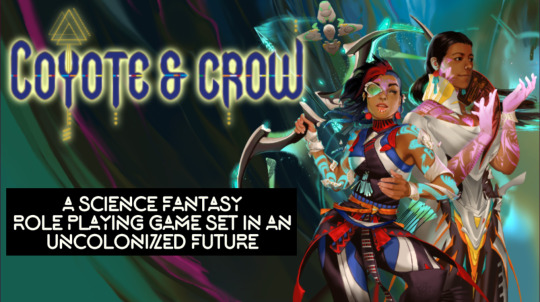

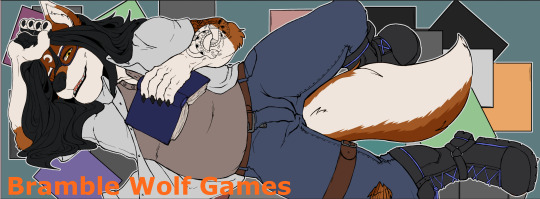
Coyote & Crow.
Coyote & Crow Games is a tabletop games publisher, primarily focused on the tabletop roleplaying game, Coyote & Crow. This is a world and game whose design team is fully Indigenous, from various First Nations people groups across North America. Coyote & Crow is a futuristic game about a land untouched by colonization, a land changed by a series of climate events that have changed the geographical and social landscape. It involves supernatural powers, a completely unique form of civil organization, and a unique d12 dice pool system
In a recent update, Connor Alexander, as the face of Coyote & Crow, announced some business decisions that include a creation of a consultant branch of the company, to provide professional consultation services for other creative endeavours that are looking to include Indigenous Representation in games.
What I love most about Coyote and Crow is that it’s a world where Indigenous creators have been given full reign over the ways they are represented in the fiction, and it provides a unique social and political imagining of society that pulls from many First Nations cultures. It’s refreshing, it’s exciting, and it provides a lot of guidance for non-Indigenous players so that they can engage with the world in a way that’s respectful.
Wendigo Workshop
This is a small team based in Quebec, Canada. I’m not entirely sure whether the team is fully Indigenous, but there are Indigenous creators as part of the team.
Currently the Workshop is working on a number of different games, including… Anomaly Hunters; a monster hunting ttrpg built on the Breathless SRD. Arkelon Chronicles; a science-fantasy ttrpg surrounding the discovery of an Alien ruin. Last Hope; a Caltrop Core game about magical girls fighting to protect the world while balancing their student lives.
Bramble Wolf Games
@sahonithereadwolf is an Indigenous creator based in Appalachia looking to make games that mean something. I found out about him through his game Exceptionals, a game about community, activism and kinetic eye beams. It’s inspired heavily by X-Men, but instead of telling superhero stories, it’s more about the fostering of a community outside of the systems created and enforced by colonial governments.
Sahoni is also currently working on a game called Protect the Sacred, a game inspired by Indiana Jones, but focused on the protection and preservation of monsters and artifacts in the interests of the cultures that have been stolen from by colonial powers. The game is about your relationship to your culture, and resistance to fascism - and you can get sneak peeks to this game through Sahoni’s Patreon.
Both Protect the Sacred and Exceptionals involve character creation that requires players to answer questions about who they are, what they do, and how they affect the community around them. They both recognize the community around you as integral to your success, and I think that this point of view is such an important concept to consider when using games as an art form that can expand your social imagination.
Also...
There is a consultancy service in Alberta, Canada called Pe Matawe Consulting, which is not focused specifically on ttrpgs, but does provide consulting for various creative endeavours. They provide consulting services as well as workshops, with the goal of providing a broader understanding of Indigenous culture and folklore.
164 notes
·
View notes
Text
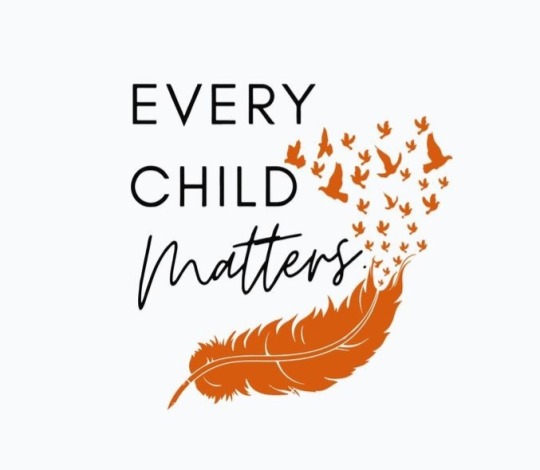
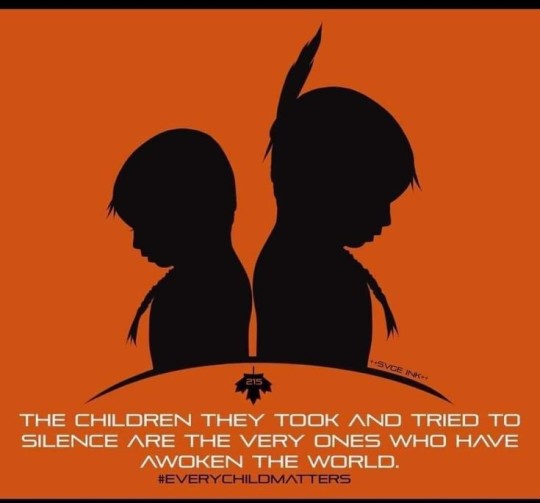
140 notes
·
View notes
Text
Song of the Day
"Call of the moose" Willy Mitchell, 1980 As you might know, September 30th is Truth and Reconciliation day (more commonly known as Orange Shirt Day), a national day in Canada dedicated to spreading awareness about the legacy of Residential schools on Indigenous people. Instead of just focusing on a song, I also wanted to briefly talk about the history of the sixties scoop and its influence on Indigenous American music and activism.
The process of Residential schooling in Canada existed well before the '60s, but the new processes of the sixties scoop began in 1951. It was a process where the provincial government had the power to take Indigenous children from their homes and communities and put them into the child welfare system. Despite the closing of residential schools, more and more children were being taken away from their families and adopted into middle-class white ones.
Even though Indigenous communities only made up a tiny portion of the total population, 40-70% of the children in these programs would be Aboriginal. In total, 20,000 children would be victims of these policies through the 60s and 70s.

These adoptions would have disastrous effects on their victims. Not only were sexual and physical abuse common problems but the victims were forcibly stripped of their culture and taught to hate themselves. The community panel report on the sixties scoop writes:
"The homes in which our children are placed ranged from those of caring, well-intentioned individuals, to places of slave labour and physical, emotional and sexual abuse. The violent effects of the most negative of these homes are tragic for its victims. Even the best of these homes are not healthy places for our children. Anglo-Canadian foster parents are not culturally equipped to create an environment in which a positive Aboriginal self-image can develop. In many cases, our children are taught to demean those things about themselves that are Aboriginal. Meanwhile, they are expected to emulate normal child development by imitating the role model behavior of their Anglo-Canadian foster or adoptive parents."
and to this day indigenous children in Canada are still disproportionately represented in foster care. Despite being 5% of the Total Canadian population, Indigenous children make up 53.8% of all children in foster care.
I would like to say that the one good thing that came out of this gruesome and horrible practice of state-sponsored child relocation was that there was a birth of culture from protest music, but there wasn't. In fact, Indigenous music has a long history of being erased and whitewashed from folk history.
From Buffy Saint-Marie pretending to be Indigenous to the systematic denial of first nations people from the Canadian mainstream music scene, the talented artists of the time were forcibly erased.
Which is why this album featuring Willy Mitchell is so important.

Willy Mitchell and The Desert River Band
This Album was compiled of incredibly rare, unheard folk and rock music of North American indigenous music in the 60s-80s. It is truly, a of a kind historical artifact and a testimony to the importance of archival work to combat cultural genocide. Please give the entire thing a listen if you have time. Call of the Moose is my favorite song on the album, written and performed by Willy Mitchell in the 80s. His Most interesting song might be 'Big Policeman' though, written about his experience of getting shot in the head by the police. He talks about it here:
"He comes there and as soon as I took off running, he had my two friends right there — he could have taken them. They stopped right there on the sidewalk. They watched him shootin’ at me. He missed me twice, and when I got to the tree line, he was on the edge of the road, at the snow bank. That’s where he fell, and the gun went off. But that was it — he took the gun out. He should never have taken that gun out. I spoke to many policemen. And judges, too. I spoke with lawyers about that. They all agreed. He wasn’t supposed to touch that gun. So why did I only get five hundred dollars for that? "
These problems talked about here, forced displacement, cultural assimilation, police violence, child exploitation, and erasure of these crimes, still exist in Canada. And so long as they still exist, it is imperative to keep talking about them. Never let the settler colonial government have peace; never let anyone be comfortable not remembering the depth of exploitation.
Every Child Matters
#orange shirt day#truth and reconciliation#first nations#song of the day#indigenous folk#canadian history#sixties scoop#indigenous music#folk#folk revival#folk music#folk rock#60s#willy mitchell#song history#60s country#80s music#protest folk#music history#residential schools#american folk#american folk revival#Spotify
114 notes
·
View notes
Text

please wear orange today and educate yourselves on the genocide committed against indigenous peoples
106 notes
·
View notes
Text


Messages, some dating back a century, written by children on the walls of a barn on the site of the former St. Joseph’s Mission Indian residential school.
Rick Gilbert, a survivor of St. Joseph’s Mission, tends to the Catholic cemetery on the grounds of the school.
During the 19th and 20th centuries, government programs in both the United States and Canada forcibly separated Indigenous children from their families, relocating them to residential boarding schools to “civilize” them. The Truth and Reconciliation Commission of Canada has acknowledged this as a form of cultural genocide.
In 2021, this awful history got a fresh round of public discourse when surveying work on the grounds of the Kamloops residential school in British Columbia identified around 200 unmarked graves. (Officially, 51 children are currently recognized as having died at the school.)
These events spurred Julian Brave NoiseCat and Emily Kassie to collaborate on Sugarcane (2024), a documentary about Canada’s residential school system. It’s told from the perspective of now-elderly survivors of St. Joseph’s Mission, another such school in British Columbia, including Julian’s father, Ed. (The documentary gets its name from the nearby Williams Lake Indian Reserve, which is often called “Sugarcane.”)
[ x ]
#chromatic voice#sugarcane 2024#julian brave noisecat#emily kassie#residential schools#truth and reconciliation#turtle island#canadian content#settler colonialism
50 notes
·
View notes
Text
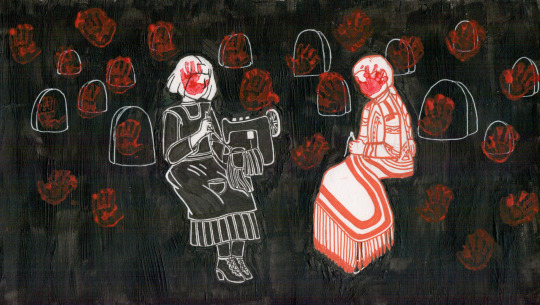
In honour of the lost lives and innocence taken too soon.
#cnanada#united states#indigenous#first nations#orange shirt day#truth and reconciliation#national day of truth and reconciliation#justice#residential schools
517 notes
·
View notes
Text
Not so subtle reminder to my followers, especially those in Canada ect, if you don't know about the mass cultural genocide of indigenous people within Canada & The US.
On September 30th, it's national Truth and Reconciliation day in Canada. Which is a honestly our government's bullshit way of getting away with not really acknowledging or doing anything to actually reconcile with their murder of children.
As a mixed Native, I'm honestly sick of seeing the lack of care I see on social media and in society for indigenous people. I'm over it. I'm tired. My heart bleeds and aches when I think about how many children never made it home and how many Missing and Murdered indigenous women, girls and 2spirit people there are.
I want allies to step it the fuck up. Where is the same outrage, where is the fire, where is the passion you have, especially looking at you white allies, for everyone else?
Land Back. Real truth and reconciliation. Listen to indigenous people.
Here are some starting points.
449 notes
·
View notes
Text
The Department of Justice has asked an Ontario court to condemn allegations that Canada intentionally withheld evidence of serial child abuse at a residential school to deny survivors justice. The federal government contends there's no evidence Canada acted in bad faith when it failed to disclose thousands of records detailing physical and sexual abuse at St. Anne's Indian Residential School in Fort Albany, Ont., for compensation hearings held between 2006 and 2014. "Some sort of explicit condemnation from the court is necessary regarding these allegations," Justice Canada lawyer Daniel Engel told Ontario Superior Court in Toronto on Thursday.
Continue Reading
Tagging: @newsfromstolenland
#tw child abuse#sex abuse#residential schools#truth and reconciliation#indigenous#first nations#cdnpoli#canadian politics#canadian news#canada
299 notes
·
View notes
Text
Indigenous Canadian dolls 🧡
Today is National Day for Truth and Reconciliation in Canada, also known as orange shirt day, we wear an orange shirt, typically with the slogan “Every Child Matters”, in remembrance and acknowledgement of what happened to Indigenous children in residential schools.
As a doll blog I feel like it is only fitting for me to highlight some amazing Indigenous Canadian artists and dolls on here!
Saila Qilavvaq from Maplelea Girls

Saila Qilavvaq is a Maplelea Girl doll who is from Iqaluit, Nunavut. She wants to be a fashion designer who brings an Inuit flair to her looks. Each Maplelea doll comes with a journal and Salia’s is the first to be written in English, French, and Inuktitut!

Along with the dolls, Maplelea Girls also makes fashion packs you can buy. Here we have the orange “Every Child Matters” shirt, Saila wearing a traditional Amauti coat, and Canyon’s Dress which was designed by Teresa Snow (the outfit is based on an outfit she made for her own daughter, Canyon)



Ribbon Skirt dolls by Tracy Boucher

These custom Ribbon Skirt dolls are meant to show women, girls, and two-spirit individuals their worth and bring attention to the MMIWG movement. Ribbon skirts are meant to be floor length and touch the ground to have connection to the Earth. Boucher further discusses the dolls and the meaning of the ribbon skirt in this interview.
No-Face dolls by Audrey “Bill” Wilson


Wilson is a Chippewas woman who based these dolls off an indigenous story of a girl who is too vain and so the Great Spirits take away her face. The story is meant to be a lesson to children about humility. More of this story can be found in this interview. 
Whetung Ojibwa dolls


In the 1960s the Whetung family began crafting more to sell at their store (now the Whetung Ojibwa Centre, a museum with indigenous art to purchase). The doll in the blue dress is named Waboose Whetung and if you find her hidden around the Whetung Ojibwa Centre you can get $5 off your purchase. More information about the Whetung history can be found here.
#Maplelea girls are basically the Canadian version of American girl dolls I feel like that’s obvious but yeah#dollblr#doll collector#indigenous#truth and reconciliation#every child matters#cultural dolls#Canada#Canadian dolls
63 notes
·
View notes
Text


Red Dress Day
National Day of remembrance and activism honouring the lives of Missing and Murdered Indigenous Women, Girls, and Two-Spirited People (MMIWG2S+).
Indigenous women, girls and 2 Spirited people face a human rights crisis in Canada, the violence that they face amounts to genocide called by the MMIWG Report. It is not just a crisis – it is a national shame. Canada has built systems that disappear Indigenous women from the Indian Act to modern policing. These broken structures are doing what they were designee to do: erase Indigenous presence, silence Indigenous voices, and sever Indigenous futures. (Amnesty International)
'If she was white, she would still be here'
#red dress day#missing and murdered indigenous women#indigenous#canada#canada politics#turtle island#truth and reconciliation#land back#woman#first nations#mmiwawareness#mmiwcanada#colonization
28 notes
·
View notes
Text
Not to be frustrated indigenous on main or anything-
How does the Canadian government expect me to believe in Truth and Reconciliation (which it already isn't doing enough in regards to the TRC but I digress-) when it's not doing anything about the genocides going on in the world?
The silence is telling that Canada will pretty much always choose its own comfort and its own way over what should be done to right things.
#indigenous#idk if this is well articulated but ya know#truth and reconciliation#palestinian genocide#good ole#colonized canada
40 notes
·
View notes
Text
An angry French Canadian/Acadian’s rant to self-proclaimed “Eastern Métis” organizations
Please note that the term “Eastern Métis” in this case refers to a social movement that involves individual and organizational claims to being “Eastern Métis,” “Québec Métis,” “Acadian-Métis,” “Mi’kmaq-Métis,” “Algonquin-Métis,” and increasingly, false claims to being Algonquin, Mi’kmaq, Abenaki, Huron-Wendat, and other First Nation peoples whose territories are located in this region.
Hi there,
As someone who is actively attempting to build a modern, inclusive spiritual practice around my ancestry and our rich cultural and religious folk traditions in Quebec and Acadie, seeing this happen angers me. WE already have these beautifully musical, lively cultures full of folktales, spirits, and prayers, heck, we still have the woven ceinture fléchée, something we SHARE with various Indigenous and Métis cultures. You don't need to go shopping for a new identity.
Through the 1970s to today, especially from 2000 to today, there has been an explosive uptick of people in Quebec, Ontario and the Maritimes claiming to be Métis. This is often because mostly white French settler Canadians are finding distant Indigenous (or supposedly Indigenous; some have been debunked) ancestors from the 1600s to the 1800s and are now claiming an Indigenous or Métis identity. Worse, they are going to Canadian courts to “fight” for their rights under the Indian Act to hunt, fish, and stay in “traditional lands” that their ancestors were apparently always a part of. They rake in what little funding there is for their own self-serving individualism at the detriment of Indigenous and actual Métis sovereignty, and also committing tax fraud, issuing out their own status cards even!
What it really is, is a vehemence towards living, actual Indigenous nations and the Métis Nation, and attempting to claim rights and tax exemptions. Where were these folks when the residential schools' mass graves started being unearthed, when the 60s Scoop happened, with even now many communities have no potable water? If they didn't know about their ancestry, chances are their every-day life wouldn't change. Every time someone from those groups gets interviewed, they can NEVER really explain the community they’re a part of. They say “it’s complicated”, and they refer to themselves only as individuals with mixed blood, and THAT is what makes them “Eastern Métis”. Worse still, many of them started off as a ‘white rights', white supremacist groups. I see them pop up in news articles about celebrating long-standing friendships between Acadians and Mi'kmaq people, and it sickens me that the news reporters didn't do any further digging.
My own family tree is right within one of those groups’ supposed claims. Peter McLeod Sr. And his wife, Marie Madeleine Manitukueu Tshirnish (died before 1860) are a frequent apparition. It sickens me that they are using this lineage to justify their greed as I’m learning the history that my family went through. When I research into my lineage, I can’t help but try to imagine what must have happened to Marie Madeleine, marrying into a Scottish household that was destroying her land with reckless tree cutting and saw mills. How her daughter Angèle married a settler and farmed. I'm still trying to learn about the Ilnuatsh's people's perception of Peter McLeod Jr., supposed founder of Chicoutimi.
I also think of Angèle’s descendants, like my 4th great grand-father, who was exploring and guiding hunters and tourists through the woods, interacting with Pekuakamiulnuatsh communities along the way (though I don't know to what degree and with what attitude). And his son clear-cutting the woods in his paper pulp factories. As I want to visit Mashteuiatsh yet again this October to appreciate their amazing Ilnu museum, to enjoy learning about their plant knowledge through their garden tours, and consulting their library, I grow more nervous of even approaching them for more information and see if I can foster community connections. It feels wrong now, even when I tell myself that cultural appreciation is encouraged.
I am no stranger to the initial feeling of ‘wow’ at finding my Indigenous roots in my tree. I get it. But you GOTTA move past it. It’s a complex emotional process, especially when you’re intelligent enough to recognize how colonialism still happens today. For me, the 1800s don’t seem that long ago. I still don’t have a right to claim what’s not mine. I have not had a link to Mashteuiatsh as a community growing up. My extended family lives within Saguenay, not thinking twice about the Ilnuatsh people living there. I don’t live nearby, and I can’t exactly just show up and expect to make friends. But I’d like to. I want to learn Nehlueun and to be humbly present and learn about the Ilnu culture, and most importantly, dedicate time to try to understand their current issues, and support in any way I can. I'm not perfect either. I want to be able to know my ancestors' names, and light a candle for them, remember them in a way that won't be like what these people are doing. Sadly it’s not that simple. And you, race-shifters, are making it so much worse.
Here is a comprehensive list of all these organisations for everyone to consult, so you can watch out for their books, essays, and flag them for what they are: frauds. Don’t support them. You’re probably wondering why I’m sharing a list if that’s going to push people towards them. I need to share it because when I am researching a website source, a reconciliation article on a news website, an essay or a book on history or folklore, they insidiously still manage to find their way in to blabber on and on about their rights. Don’t fall for it. If you see them in a source or bibliography while you’re researching Quebecois and Acadian folk ways, run.
For those interested in further reading, as I will be, here's a great book on this topic. Darryl Leroux is an associate professor at St. Mary's University in Halifax. His work focuses on racism and colonialism among descendants of French settlers.
Darryl Leroux’s book, Distorted Descent: White Claims to Indigenous Identity, 2019.
He is also the co-creator Raceshifting.com, where he monitors these groups and what they're trying to do in court.
Also, support Indigenous authors and artists with this website! I'll be perusing for books myself from Ilnuatsh authors.
#raceshifting#truth and reconciliation#land back#indigenous rights#settler colonialism#colonialism#indigenous sovereignty#self determination#do better#treaty rights#quebec#acadian#nitassinan#mi'kma'ki#mi'kmaq#ilnuatsh
11 notes
·
View notes
Text
Sled Dog Slaughter
#tiktok#canada#history#indigenous#first nations#sled dogs#genocide#inuit#truth and reconciliation#ethnic cleansing
31 notes
·
View notes